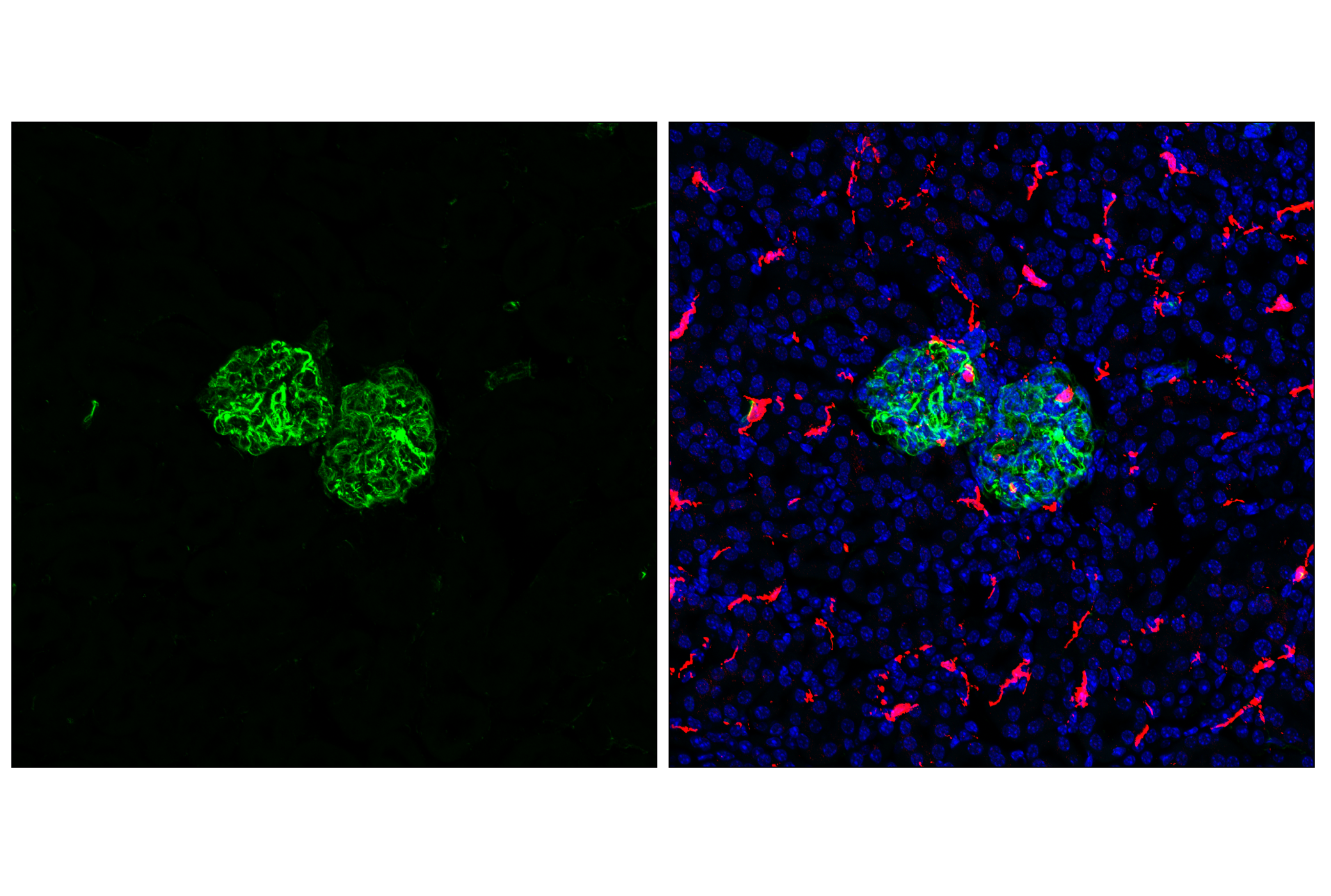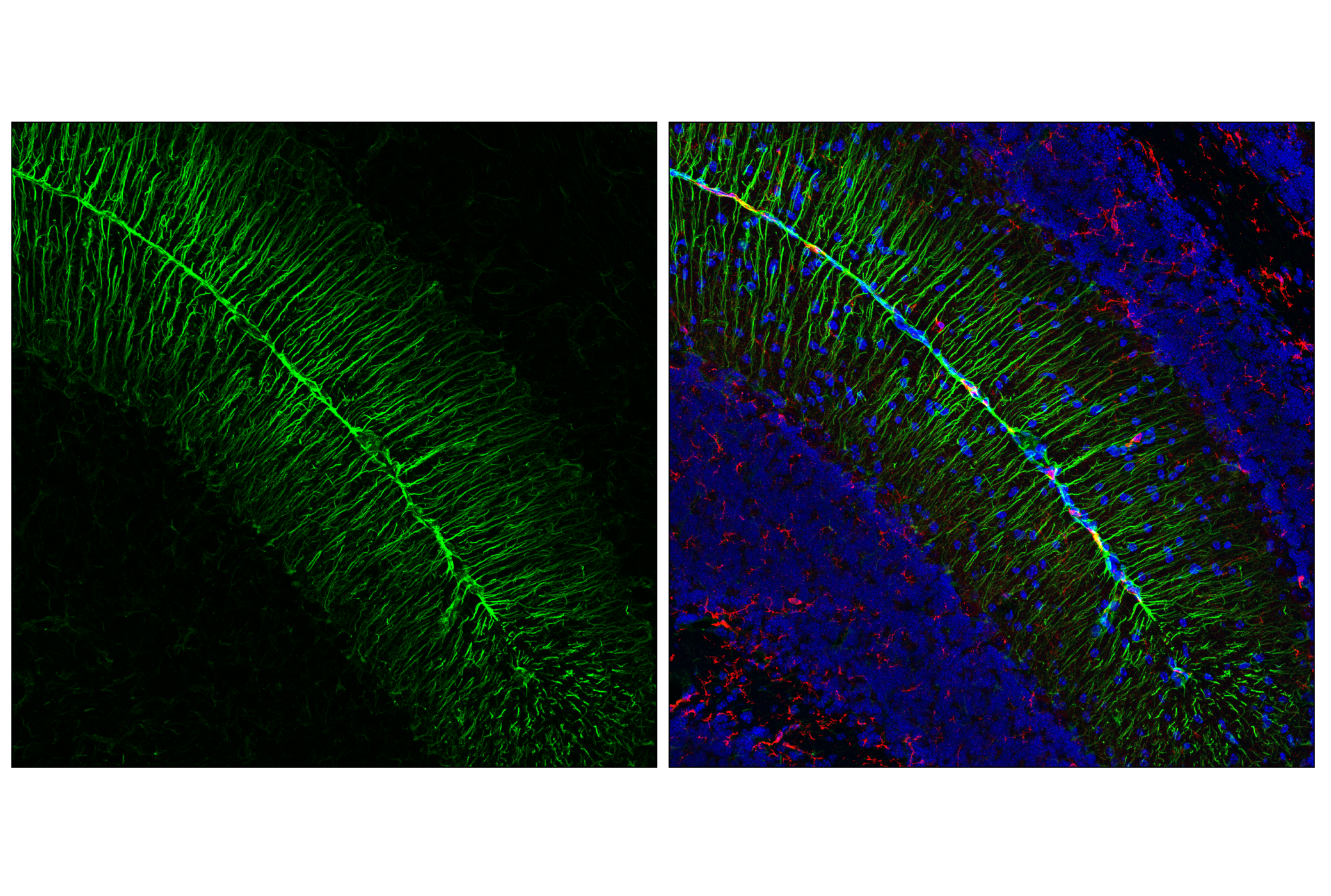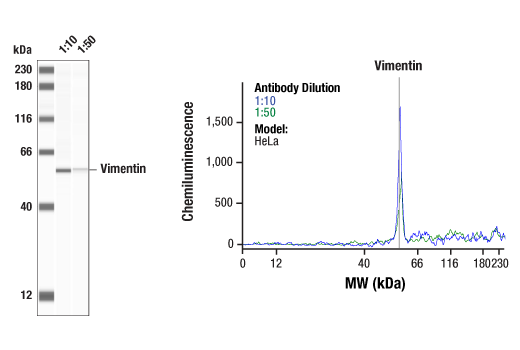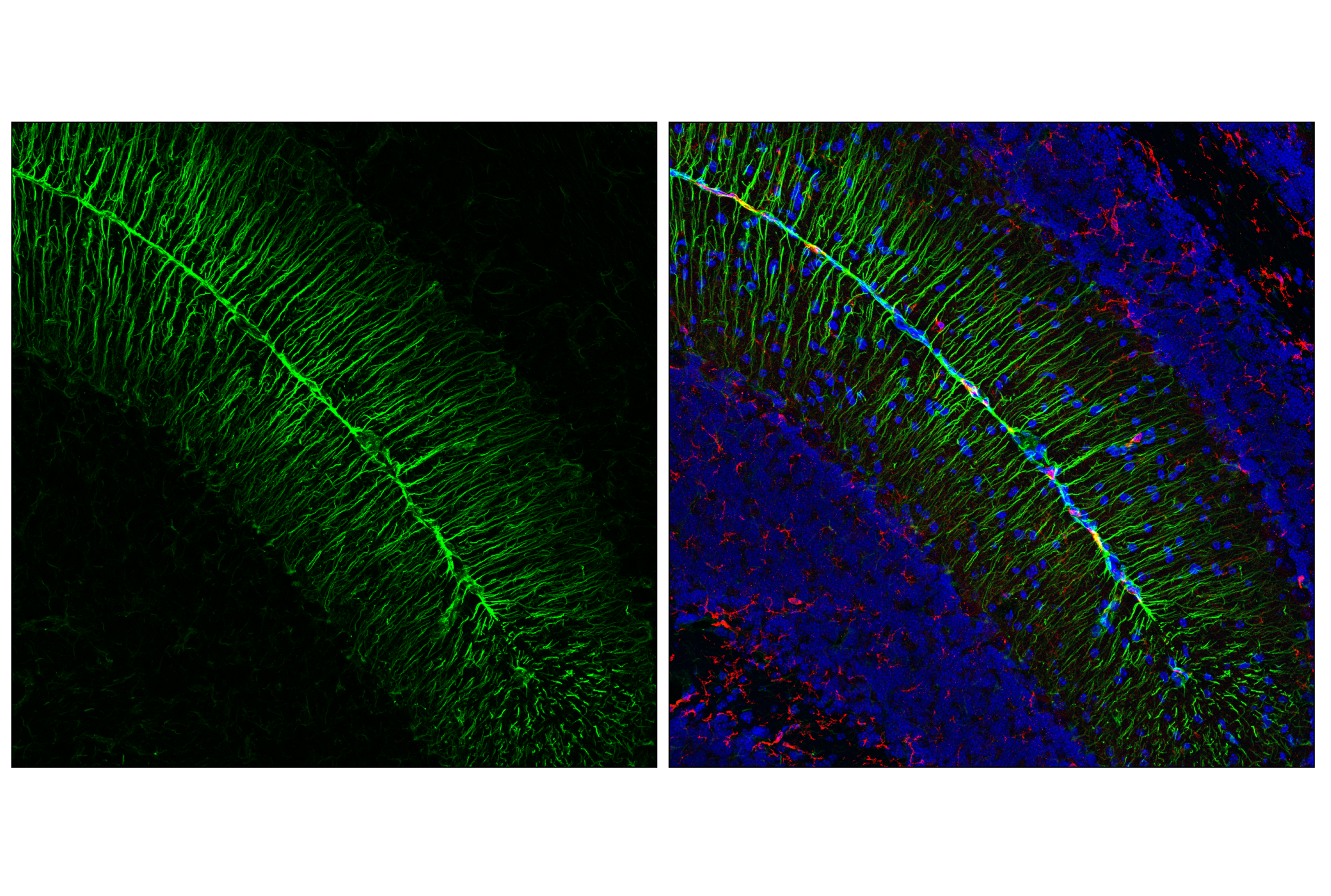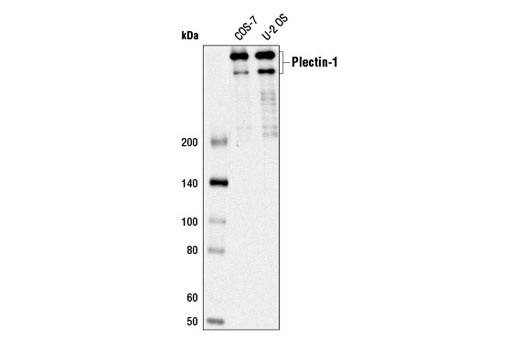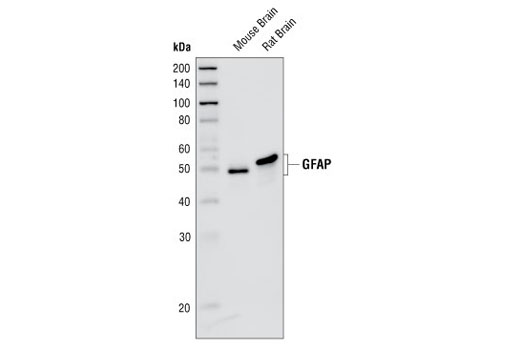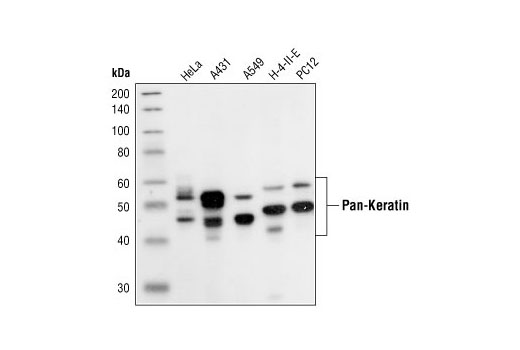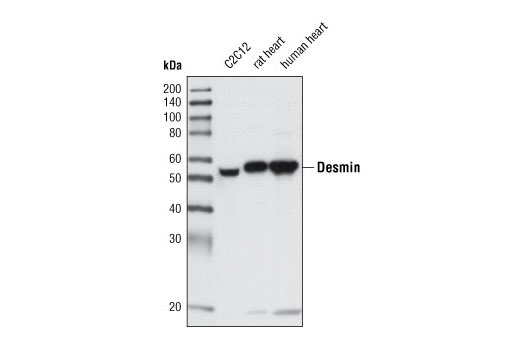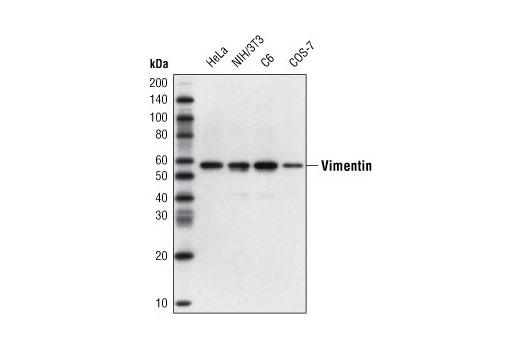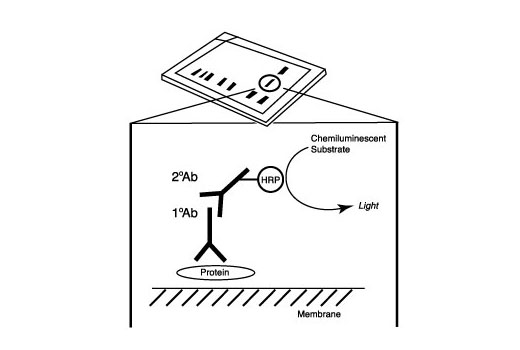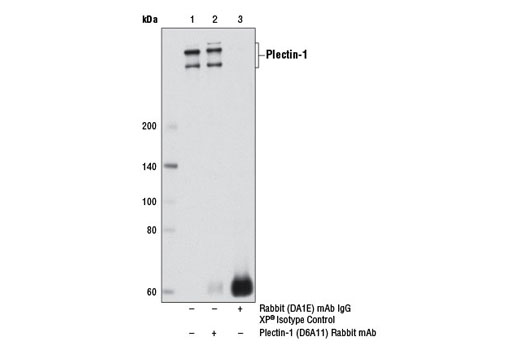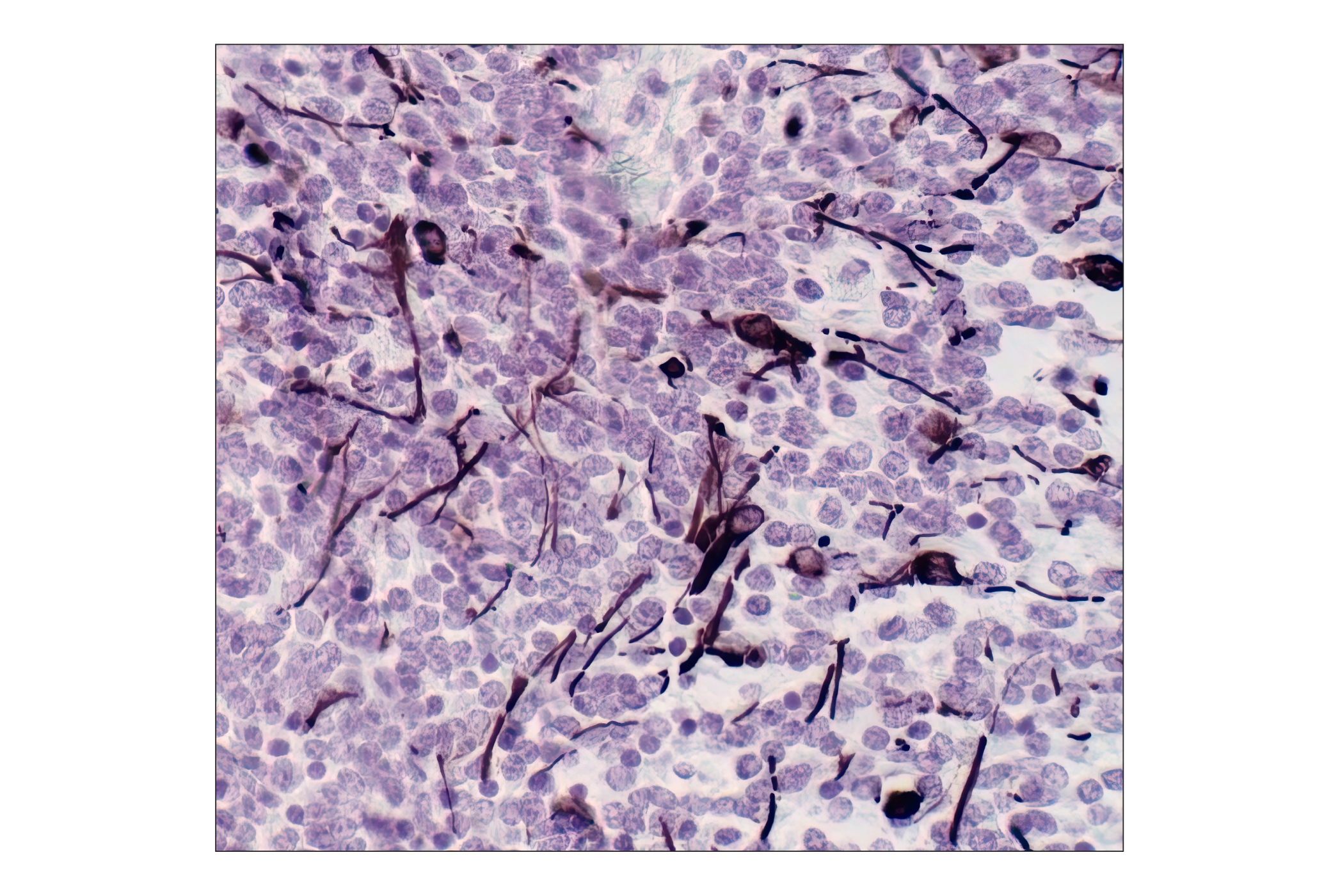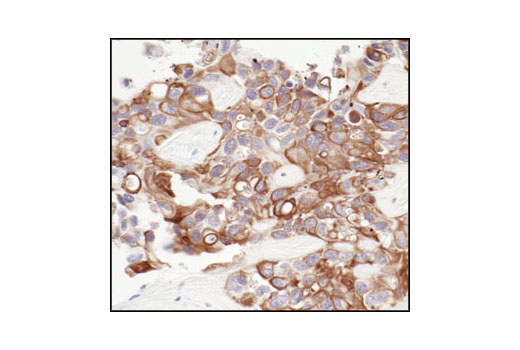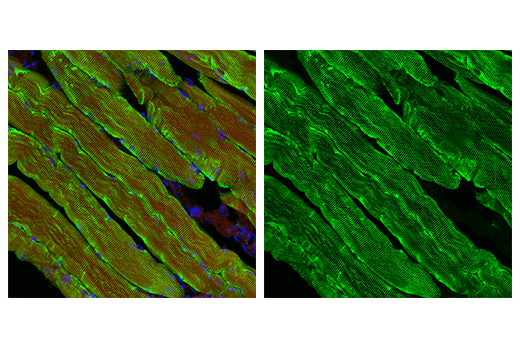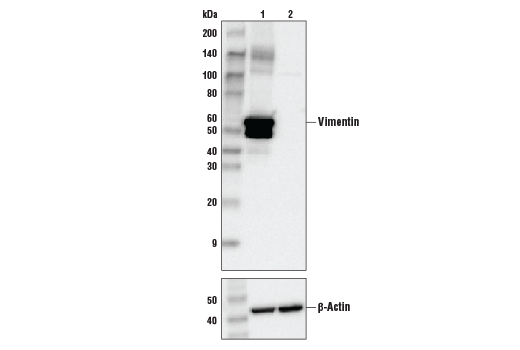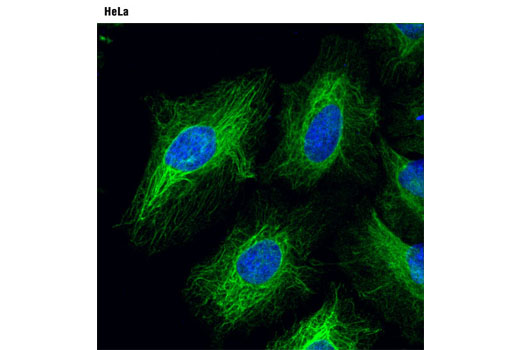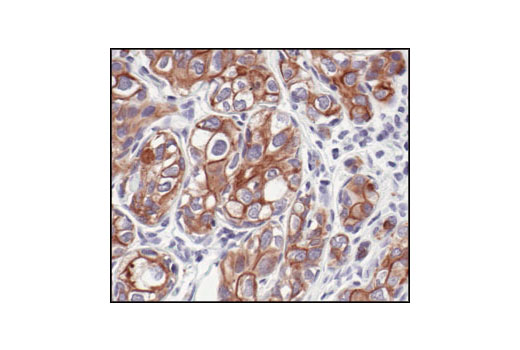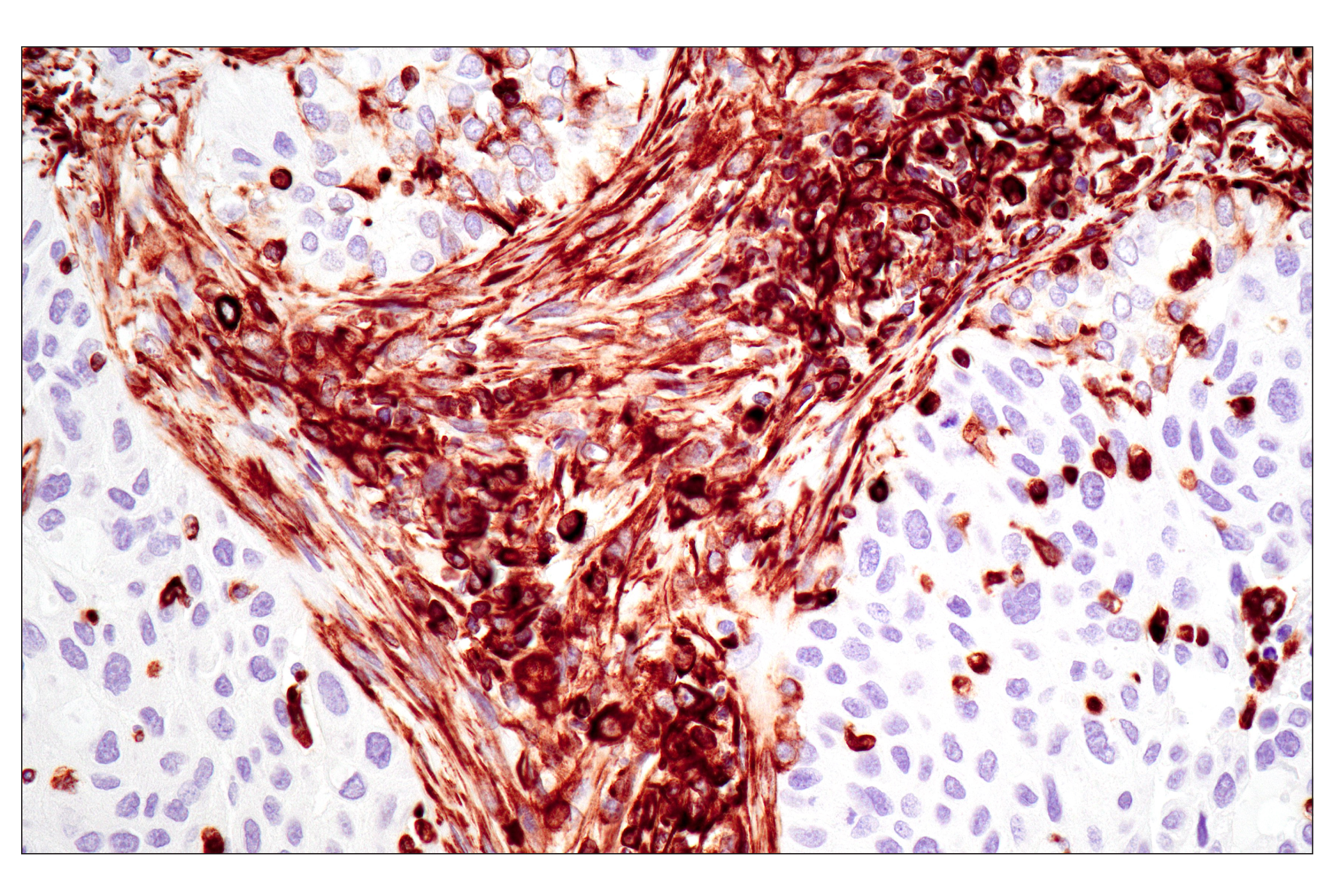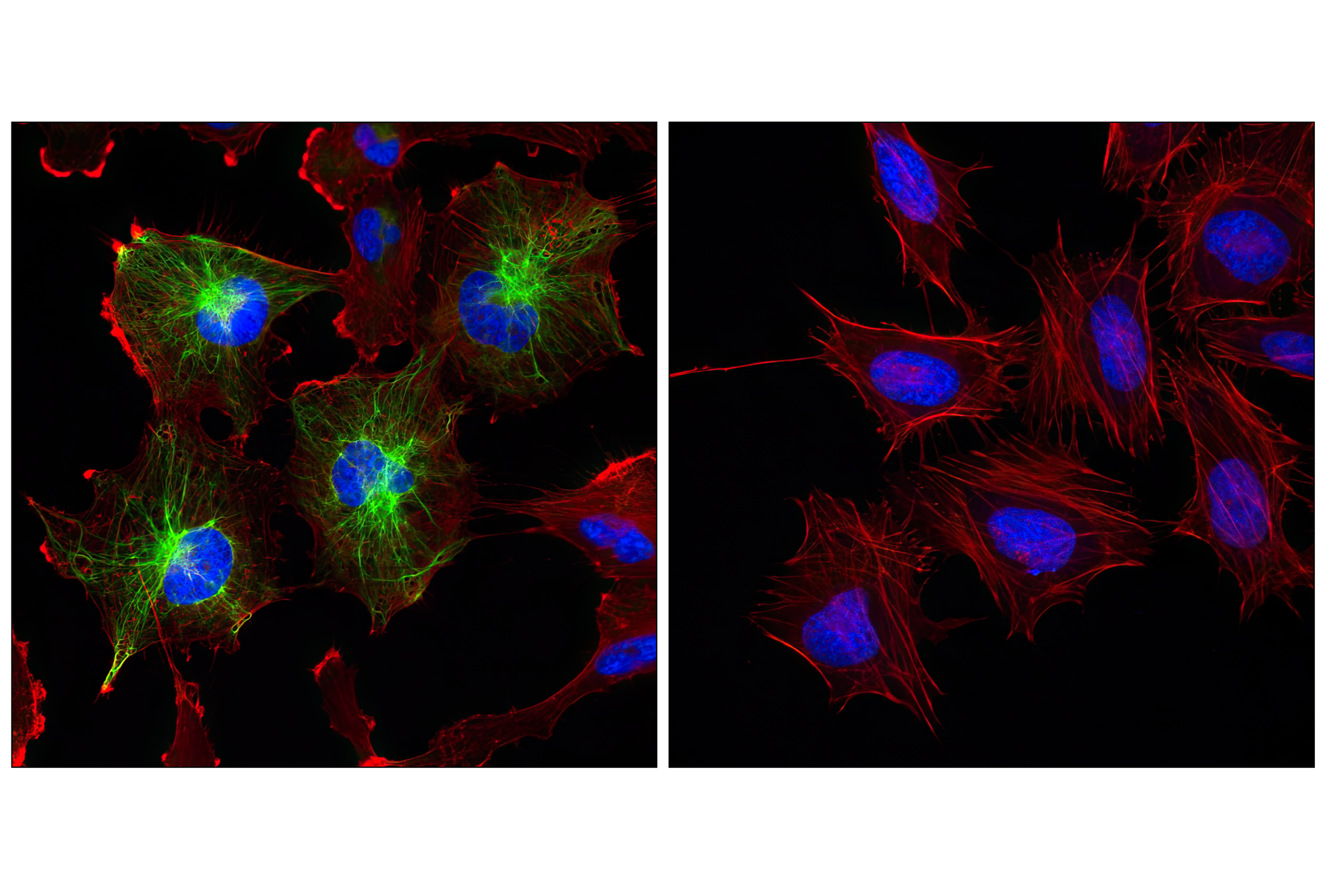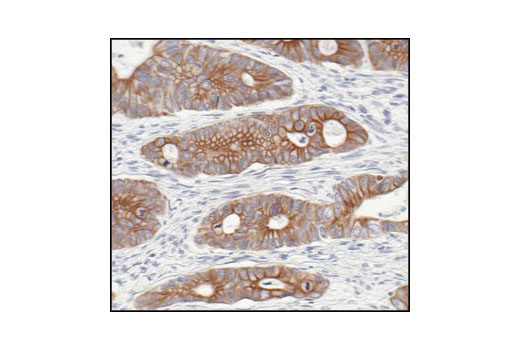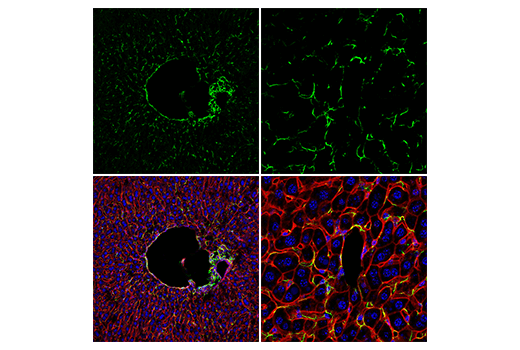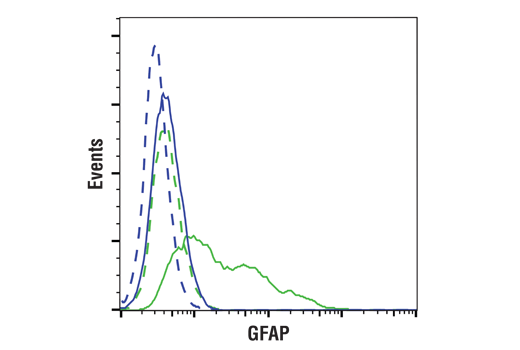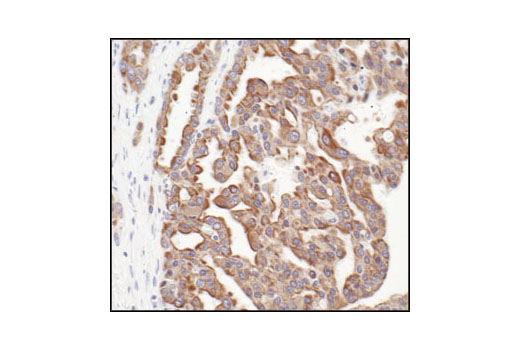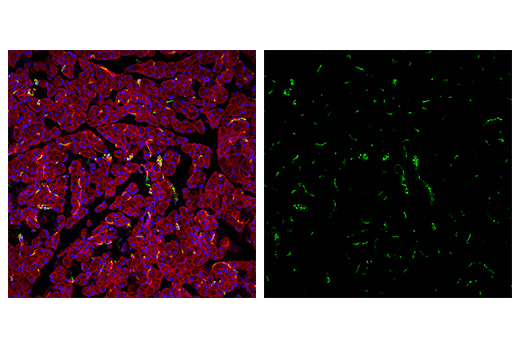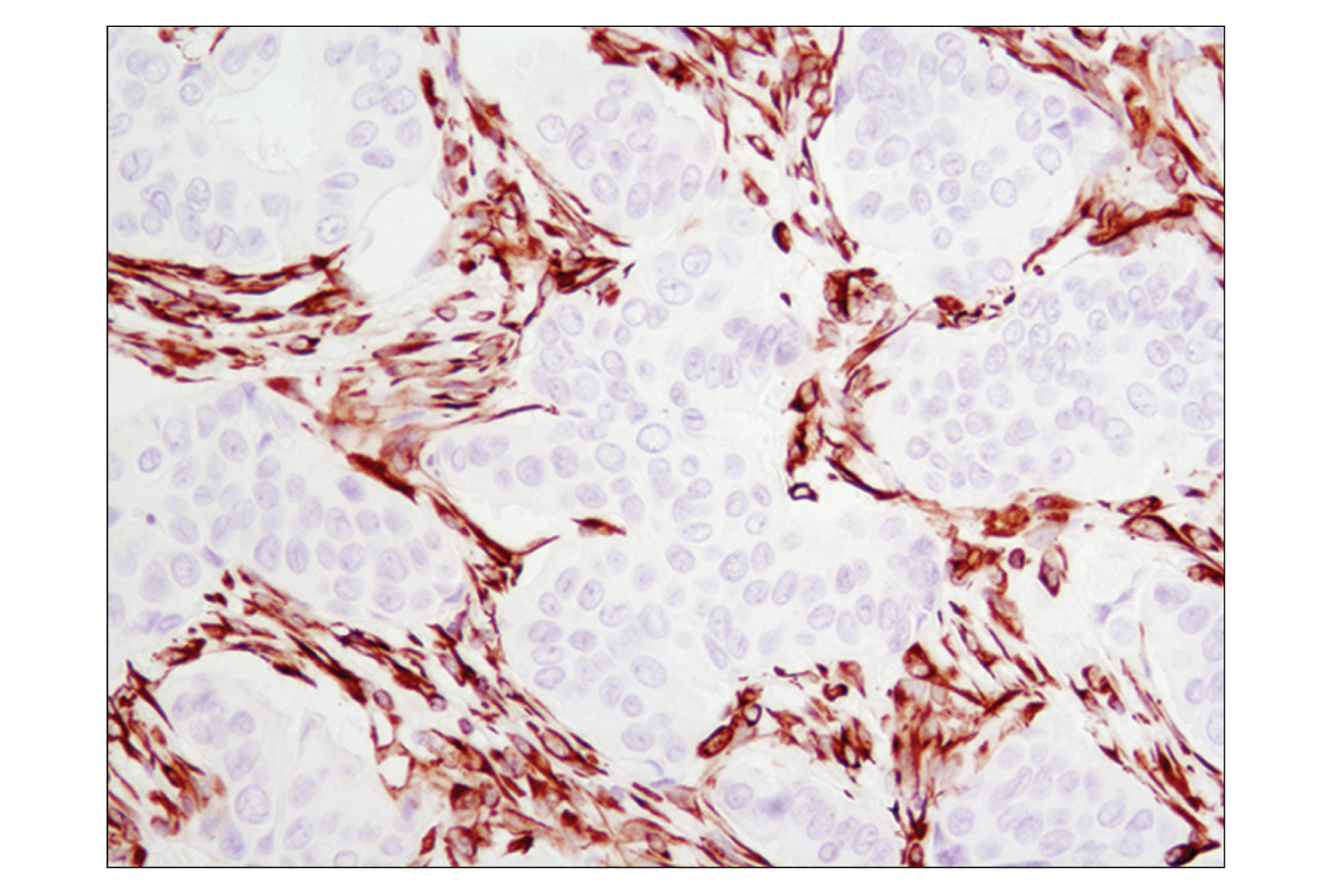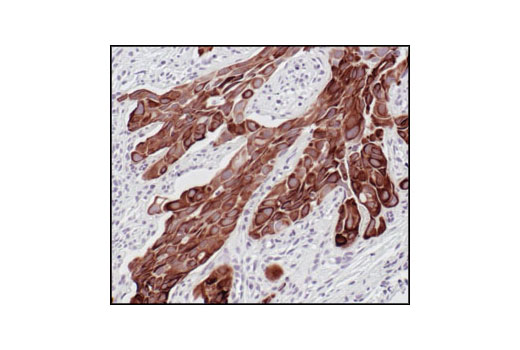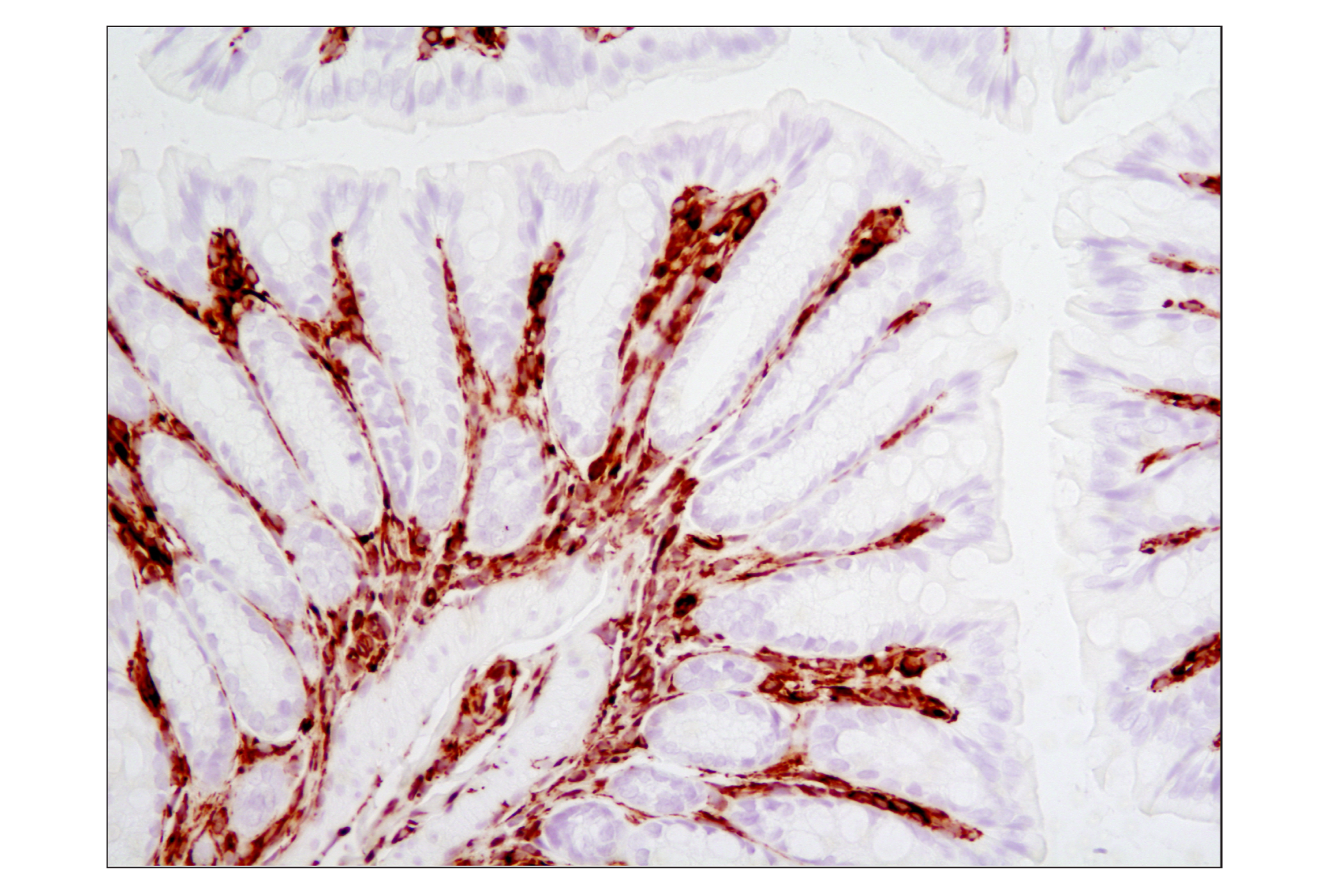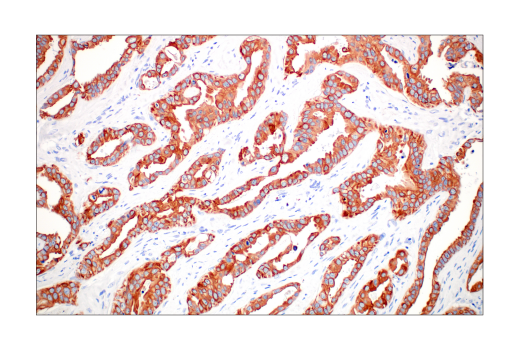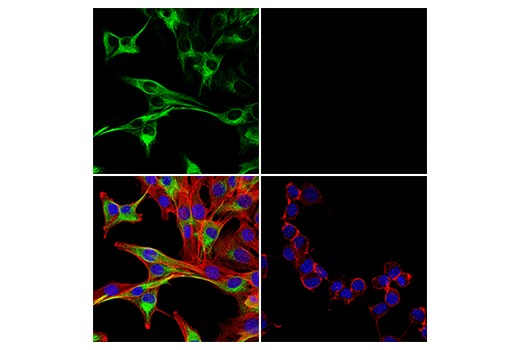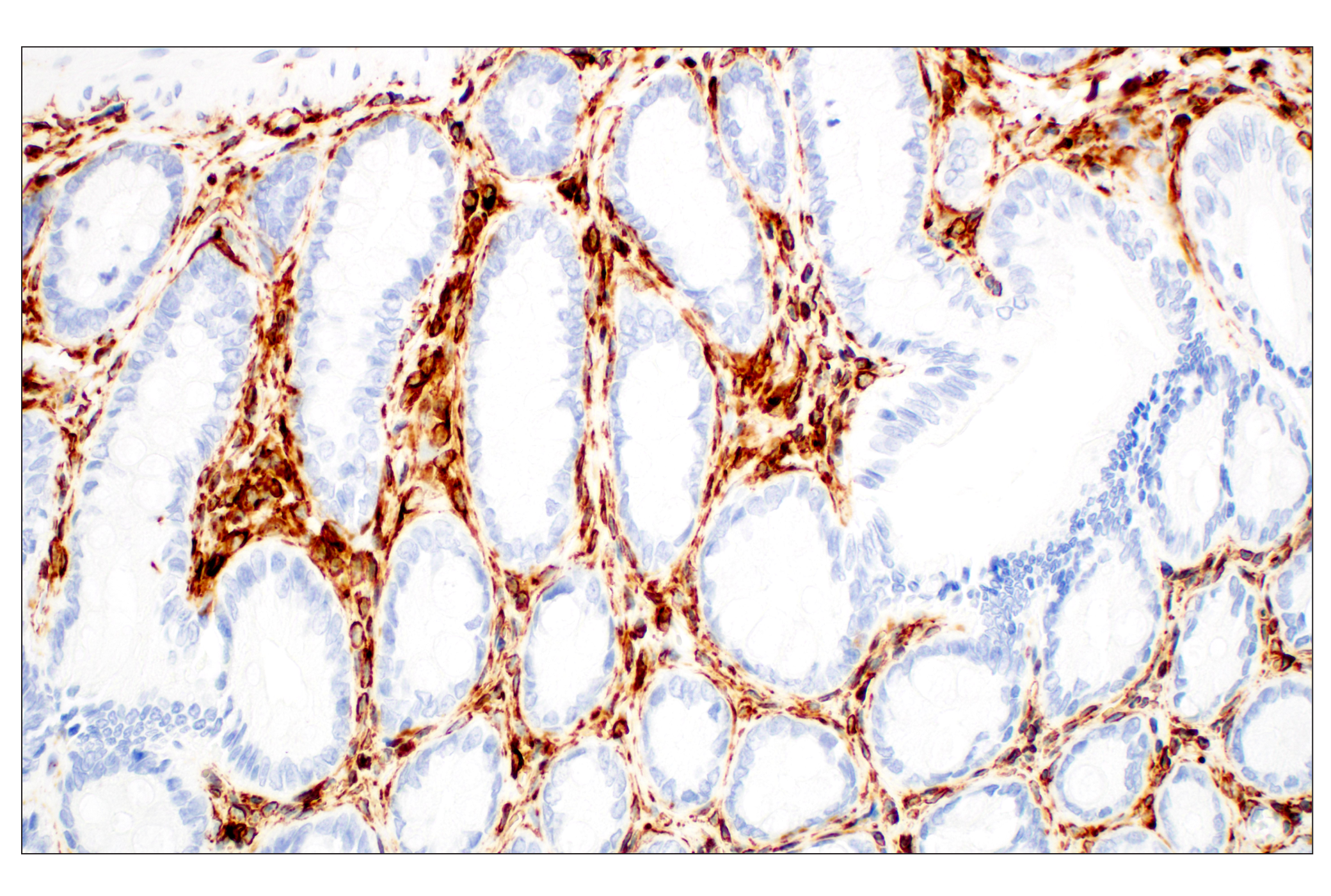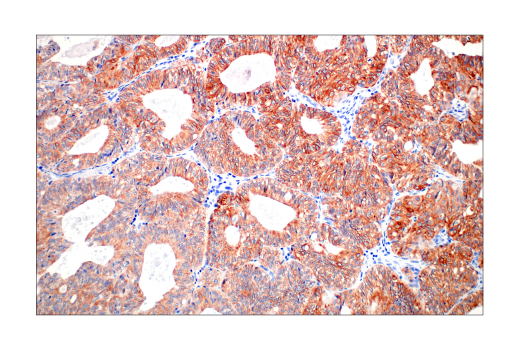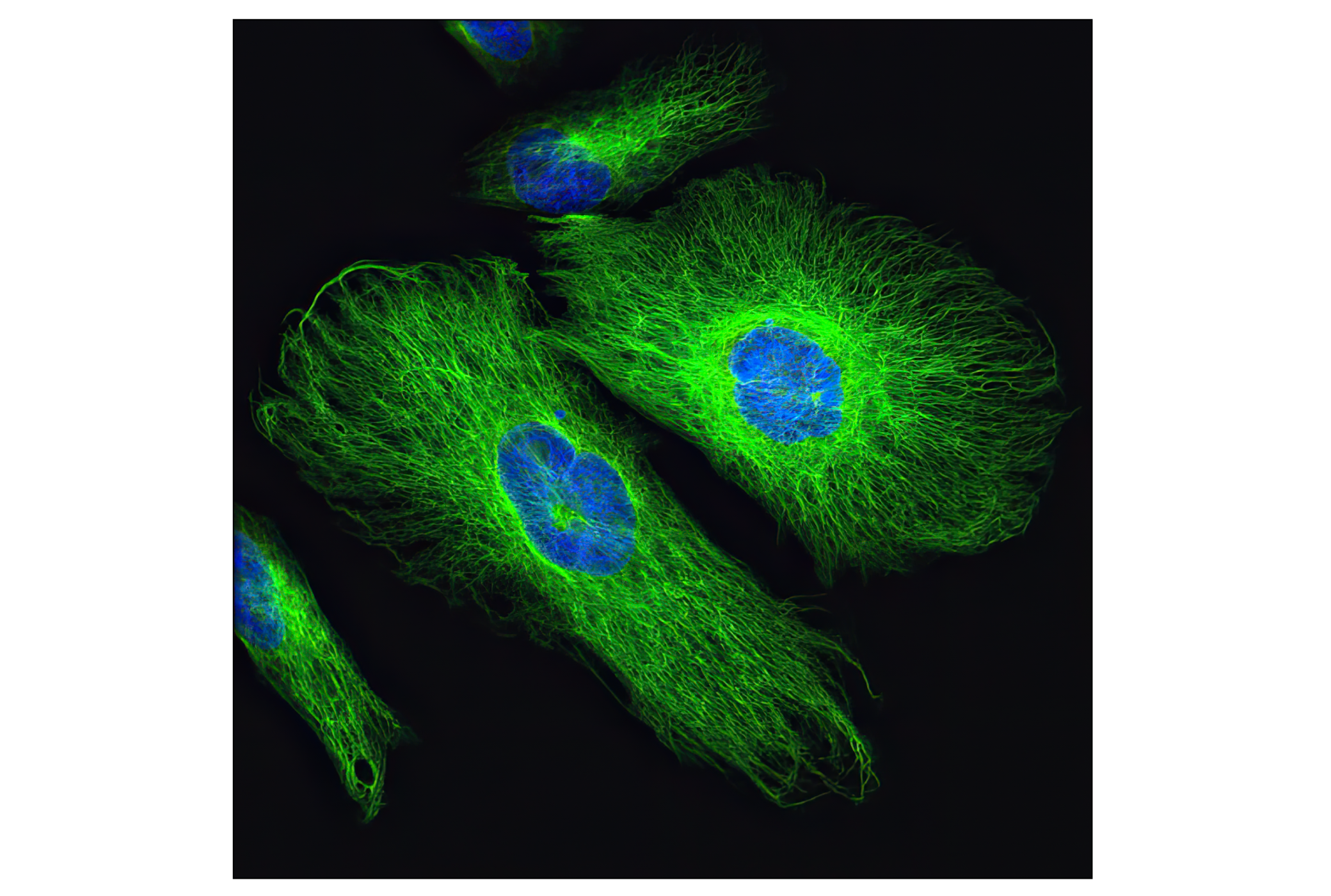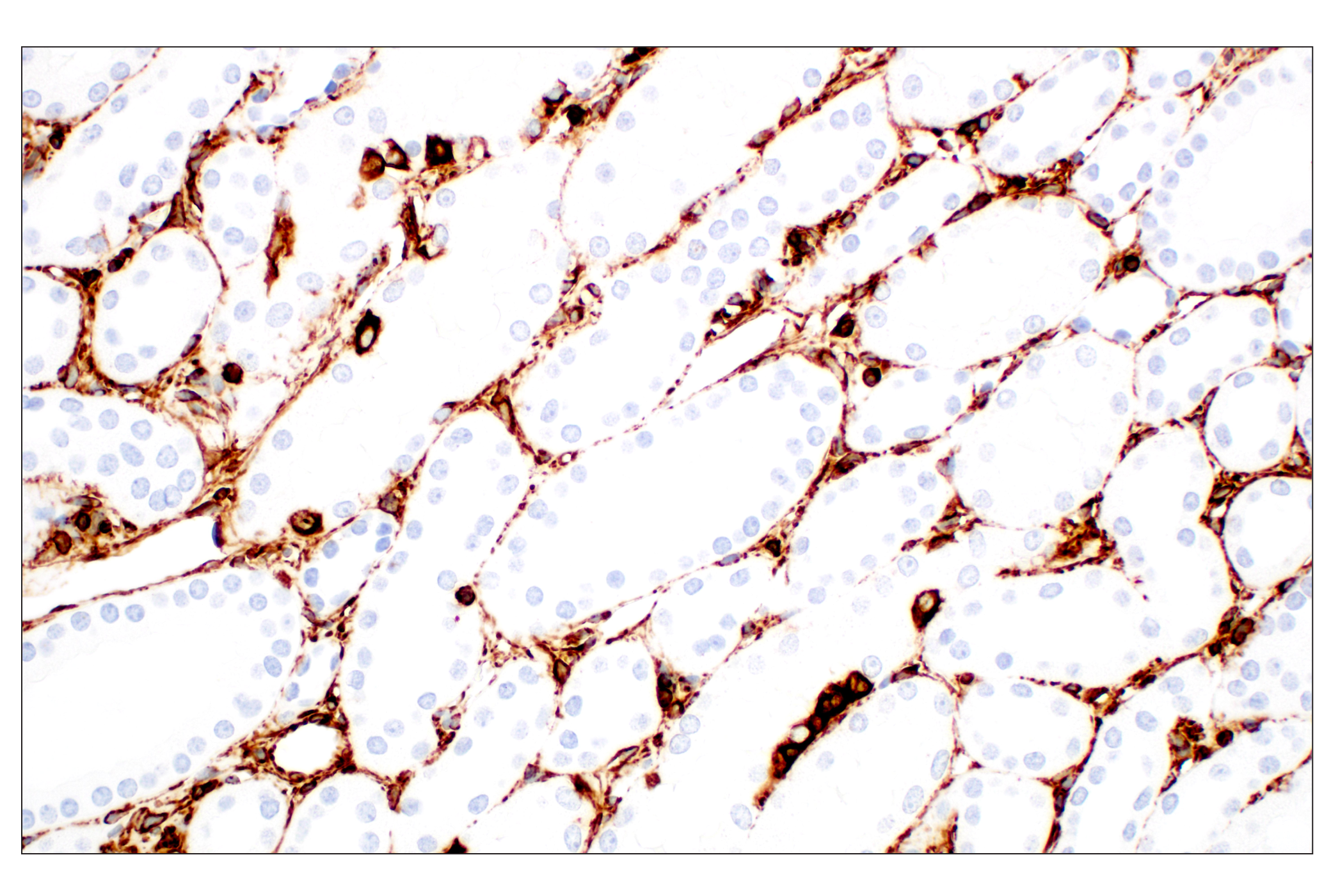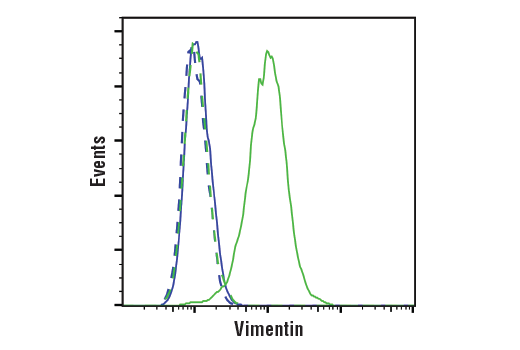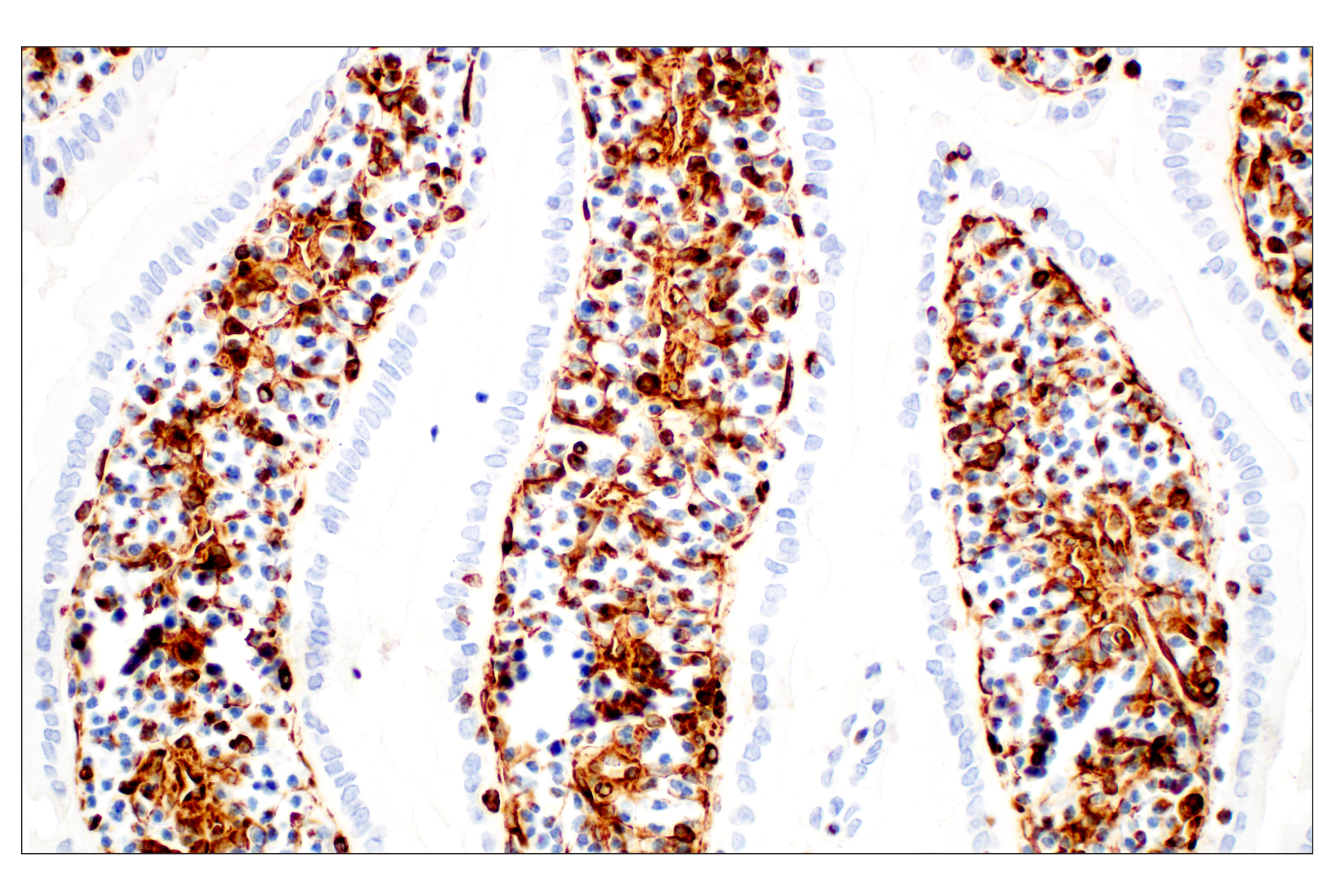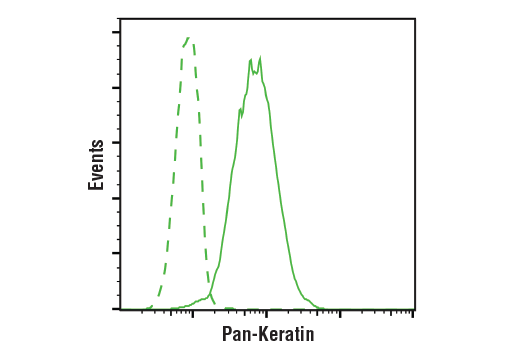| Product Includes | Product # | Quantity | Mol. Wt | Isotype/Source |
|---|---|---|---|---|
| Pan-Keratin (C11) Mouse mAb | 4545 | 40 µl | 46-58 kDa | Mouse IgG1 |
| GFAP (GA5) Mouse mAb | 3670 | 40 µl | 50 kDa | Mouse IgG1 |
| Vimentin (D21H3) XP® Rabbit mAb | 5741 | 40 µl | 57 kDa | Rabbit IgG |
| Desmin (D93F5) XP® Rabbit mAb | 5332 | 40 µl | 53 kDa | Rabbit IgG |
| Plectin-1 (D6A11) Rabbit mAb | 12254 | 40 µl | 400-500 kDa | Rabbit IgG |
| Anti-rabbit IgG, HRP-linked Antibody | 7074 | 100 µl | Goat | |
| Anti-mouse IgG, HRP-linked Antibody | 7076 | 100 µl | Horse |
Please visit cellsignal.com for individual component applications, species cross-reactivity, dilutions, protocols, and additional product information.
Description
The Intermediate Filaments Antibody Sampler Kit provides an economical means to evaluate the presence and status of intermediate filaments. The kit includes enough primary and secondary antibody to perform four Western blot experiments per antibody.
Storage
Background
The cytoskeleton consists of three types of cytosolic fibers: microfilaments (actin filaments), intermediate filaments and microtubules. Major types of intermediate filaments are distinguished and expressed in particular cell types: cytokeratins (epithelial cells), glial fibrillary acidic protein, GFAP (glial cells), desmin (skeletal, visceral and certain vascular smooth muscle cells), vimentin (mesenchyme origin) and neurofilaments (neurons). GFAP and vimentin form intermediate filaments in astroglial cells and modulate their motility and shape (1). In particular, vimentin filaments are present at early developmental stages, while GFAP filaments are characteristic of differentiated and mature brain astrocytes. Thus, GFAP is commonly used as a marker for intracranial and intraspinal tumors arising from astrocytes (2). Vimentin is present in sarcomas, but not carcinomas, and its expression is examined in conjunction with that of other markers to distinguish between the two (3).
Desmin is a myogenic marker expressed in early development that forms a network of filaments that extends across the myofibril and surrounds Z discs. The desmin cytoskeleton provides a connection between myofibrils, organelles and the cytoskeleton (4). Desmin knockout mice develop cardiomyopathy as well as skeletal and smooth muscle defects (5). In humans, desmin related myopathies might be caused by mutations in the corresponding desmin gene or in proteins with which desmin interacts, including αB-crystallin and synemin. Disorganized desmin filaments and the accumulation of protein aggregates comprised predominantly of desmin characterize desmin-related myopathies (reviewed in 6,7).
Keratins assemble into filaments, forming heterodimers of an acidic keratin (or type I keratin, keratins 9 to 23) and a basic keratin (or type II keratin, keratins 1 to 8) (8,9). Keratin isoforms demonstrate tissue- and differentiation-specific profiles, which make them useful as biomarkers (8). Mutations in keratin genes are associated with skin disorders, liver and pancreatic diseases, and inflammatory intestinal diseases (10-13).
Plectin is a large, widely expressed protein that crosslinks the intermediate filament and actin cytoskeleton, mechanically stabilizing cells and tissues. Plectin also plays a role in the regulation of actin dynamics and acts as a scaffold for signaling molecules (14). It is important in the stabilization of hemidesmosomes, crosslinking them to the intermediate filament network. Plectin has been shown to be involved in several signaling cascades. It signals to PKC by binding to and sequestering RACK1, the receptor for activated C kinase 1 (15,16). Plectin is also involved in the regulation of cytokeratin architecture and cell stress response (16), signaling through the chemokine receptor CXCR4 (17), regulation of AMP-activated protein kinase (AMPK) activity and signaling in mouse myotubes (18).
- Eng, L.F. et al. (2000) Neurochem Res 25, 1439-51.
- Goebel, H.H. et al. (1987) Acta Histochem Suppl 34, 81-93.
- Leader, M. et al. (1987) Histopathology 11, 63-72.
- Capetanaki, Y. et al. (2007) Exp Cell Res 313, 2063-76.
- Li, Z. et al. (1996) Dev Biol 175, 362-6.
- Paulin, D. and Li, Z. (2004) Exp Cell Res 301, 1-7.
- Paulin, D. et al. (2004) J Pathol 204, 418-27.
- Moll, R. et al. (1982) Cell 31, 11-24.
- Chang, L. and Goldman, R.D. (2004) Nat Rev Mol Cell Biol 5, 601-13.
- Ramaekers, F.C. and Bosman, F.T. (2004) J Pathol 204, 351-4.
- Lane, E.B. and McLean, W.H. (2004) J Pathol 204, 355-66.
- Zatloukal, K. et al. (2004) J Pathol 204, 367-76.
- Owens, D.W. and Lane, E.B. (2004) J Pathol 204, 377-85.
- Wiche, G. (1998) J Cell Sci 111 ( Pt 17), 2477-86.
- Osmanagic-Myers, S. and Wiche, G. (2004) J Biol Chem 279, 18701-10.
- Osmanagic-Myers, S. et al. (2006) J Cell Biol 174, 557-68.
- Ding, Y. et al. (2008) Exp Cell Res 314, 590-602.
- Gregor, M. et al. (2006) J Cell Sci 119, 1864-75.
Background References
Trademarks and Patents
Limited Uses
Except as otherwise expressly agreed in a writing signed by a legally authorized representative of CST, the following terms apply to Products provided by CST, its affiliates or its distributors. Any Customer's terms and conditions that are in addition to, or different from, those contained herein, unless separately accepted in writing by a legally authorized representative of CST, are rejected and are of no force or effect.
Products are labeled with For Research Use Only or a similar labeling statement and have not been approved, cleared, or licensed by the FDA or other regulatory foreign or domestic entity, for any purpose. Customer shall not use any Product for any diagnostic or therapeutic purpose, or otherwise in any manner that conflicts with its labeling statement. Products sold or licensed by CST are provided for Customer as the end-user and solely for research and development uses. Any use of Product for diagnostic, prophylactic or therapeutic purposes, or any purchase of Product for resale (alone or as a component) or other commercial purpose, requires a separate license from CST. Customer shall (a) not sell, license, loan, donate or otherwise transfer or make available any Product to any third party, whether alone or in combination with other materials, or use the Products to manufacture any commercial products, (b) not copy, modify, reverse engineer, decompile, disassemble or otherwise attempt to discover the underlying structure or technology of the Products, or use the Products for the purpose of developing any products or services that would compete with CST products or services, (c) not alter or remove from the Products any trademarks, trade names, logos, patent or copyright notices or markings, (d) use the Products solely in accordance with CST Product Terms of Sale and any applicable documentation, and (e) comply with any license, terms of service or similar agreement with respect to any third party products or services used by Customer in connection with the Products.
